In a new blog post, Square Enix cracked open the upcoming Tactics Ogre Reborn strategy RPG remaster set to release on November 11th for PlayStation 4/5, Nintendo Switch, and Steam. The game is largely based off of the PSP remake Let Us Cling Together but with some major tweaks like a UI overhaul, class rebalancing, voice acting, encounter redesign, and more.
Highlighted are some of the major systems involved in customizing the protagonist Denam Pavell, including his birth date, tarot card, and dominant element based on a god of myth. Artwork of those elementally-aspected gods has been created by Tsubasa Masao, whom you may remember creating the character design for 2010’s Let Us Cling Together.
One notable change from the PSP remake is that characters will now level up individually rather than by their class. Yasumi Matsuno, returning to Square Enix to work on the project, teased how you could power level units for an easier time getting them up to snuff.
Below, we’ve collected the latest information Square Enix had to share regarding key gameplay systems:
Tarot Cards & Character Creation
Tarot cards are traditionally associated with fortune telling, but they’re also deeply connected to the Ogre Battle series.
In Tactics Ogre they play an important role – not just in gameplay, but also in character creation.
When you’re setting up the character at the start of the game, you’ll be asked to choose a date of birth for the protagonist, Denam.
Then 22 of the tarot cards, known as the major arcana, will appear and pose questions.
Denam’s initial stats will be determined by your answers to these questions.
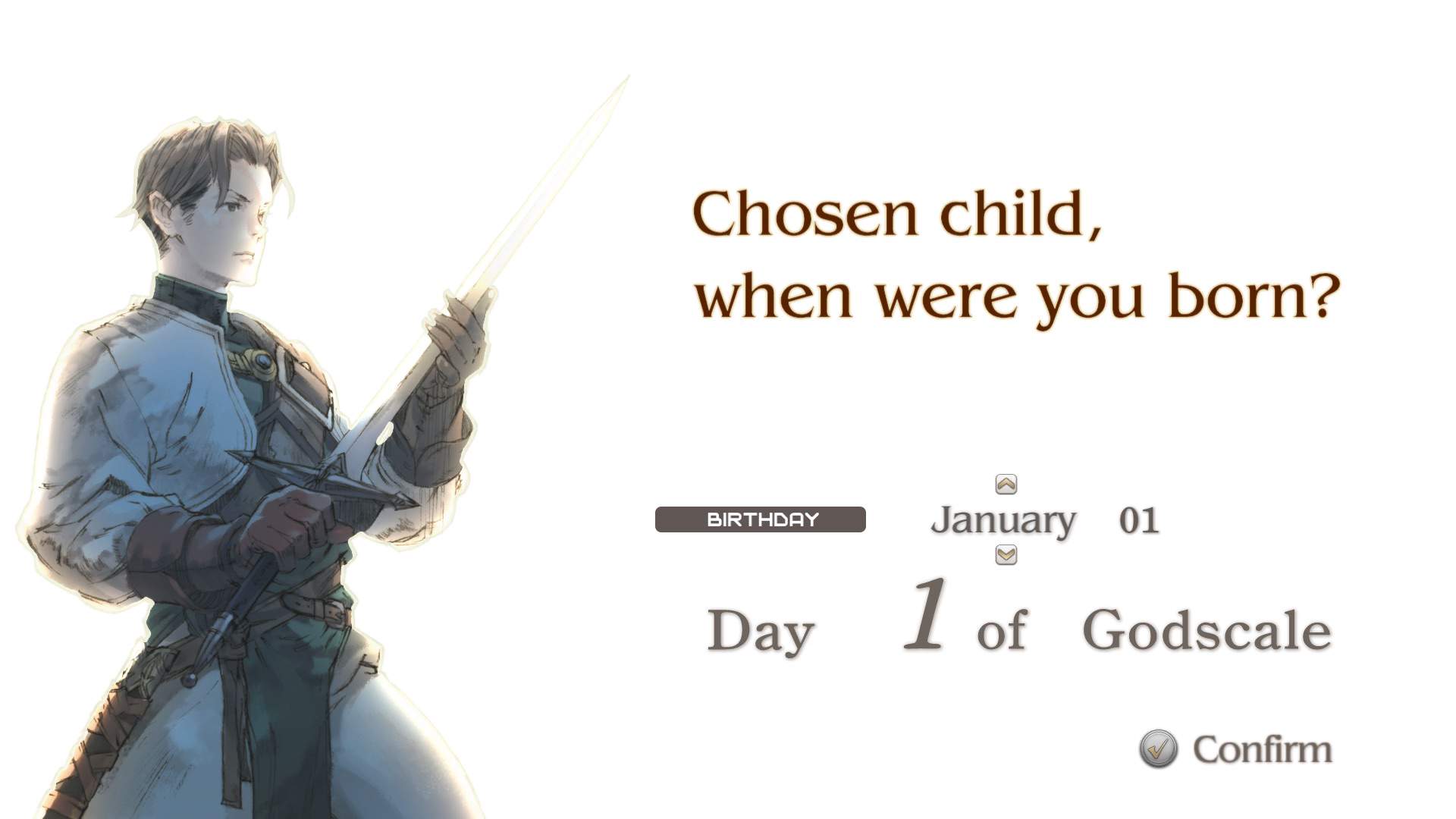
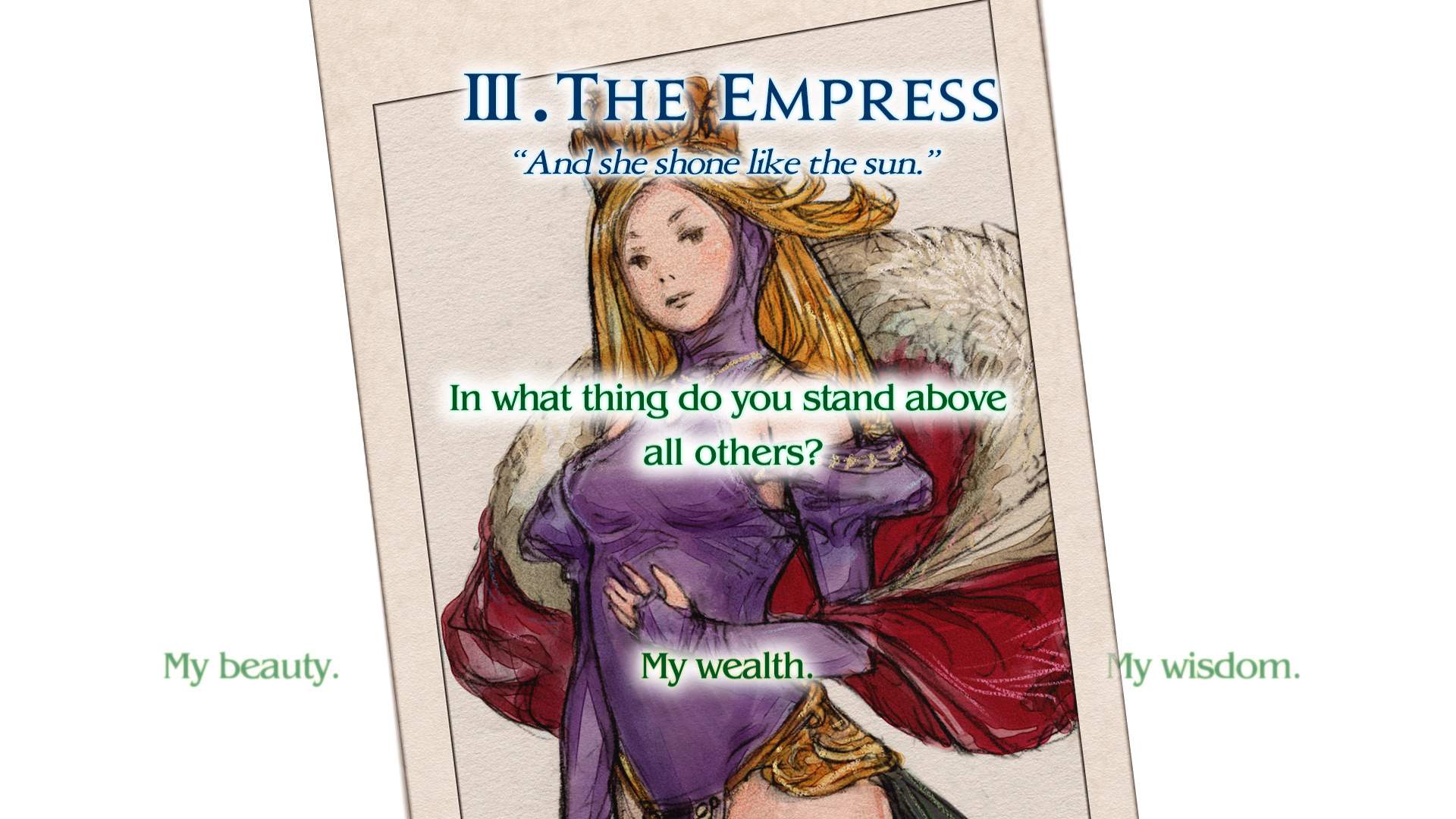
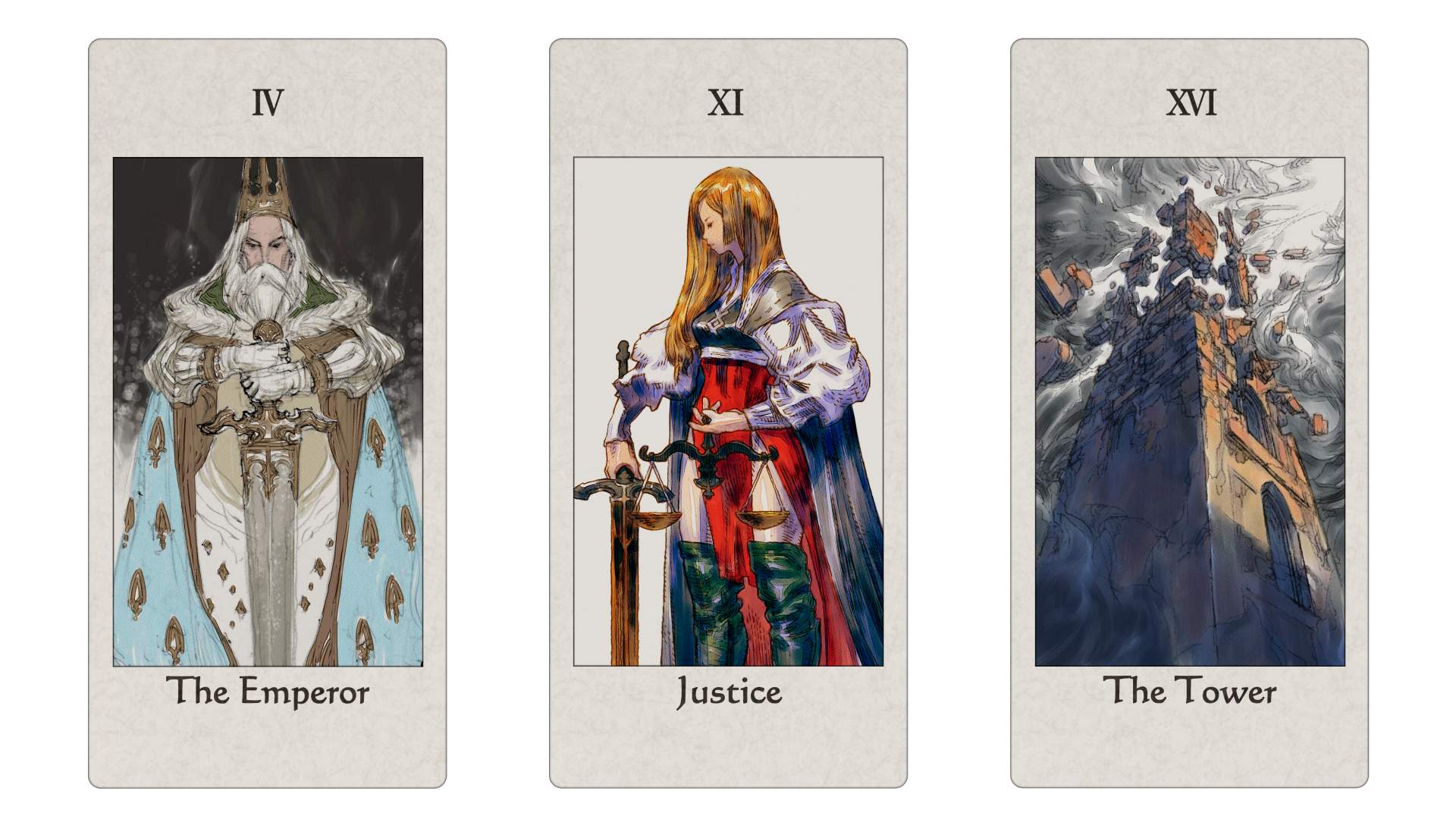
A Branching Narrative with Multiple Endings
Tactics Ogre: Reborn features a multi-scenario system, where developments in the story and its eventual conclusion can change depending on the decisions you make.
Denam faces many difficult choices over the course of the game, and the people he meets – and the world of Valeria itself – will be shaken by his decisions.
All kinds of shocking developments await you – from encounters with new characters to allies fracturing from friend to foe according to their ideology.
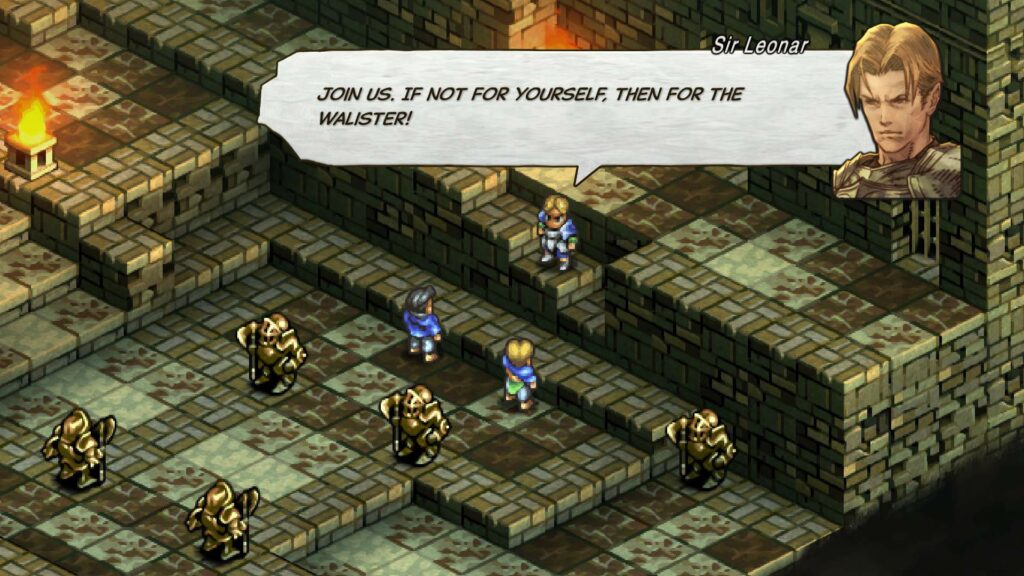
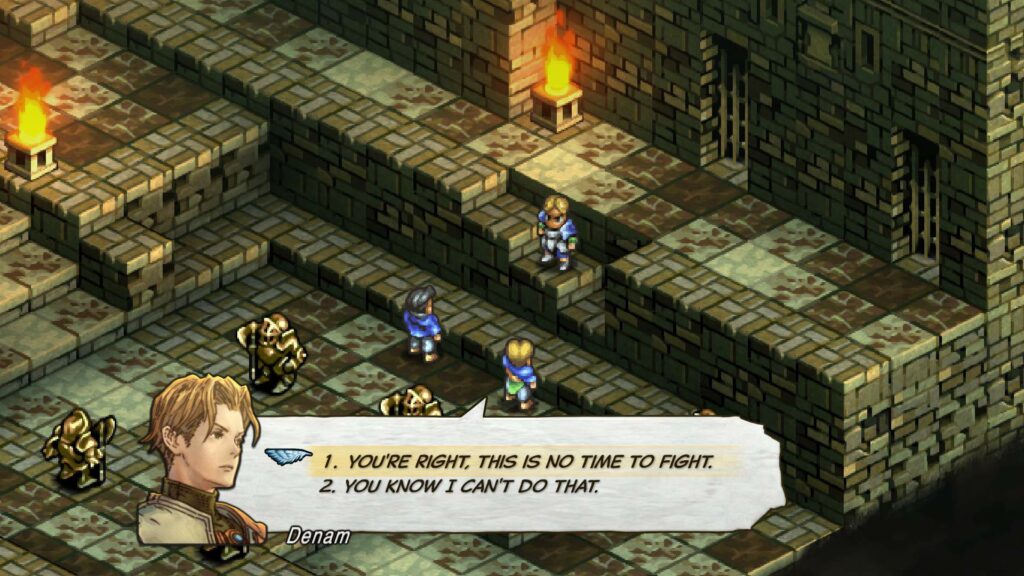
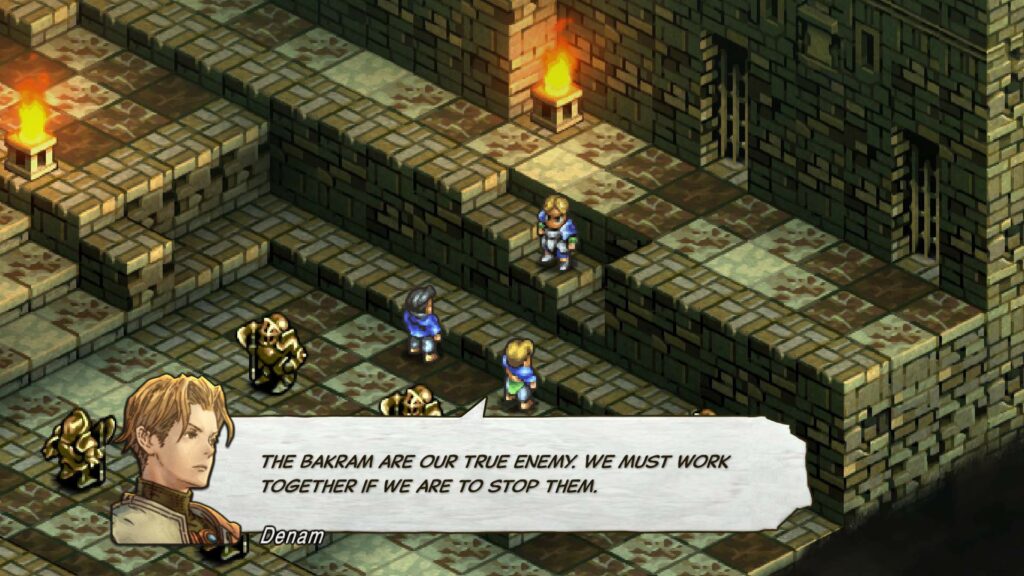
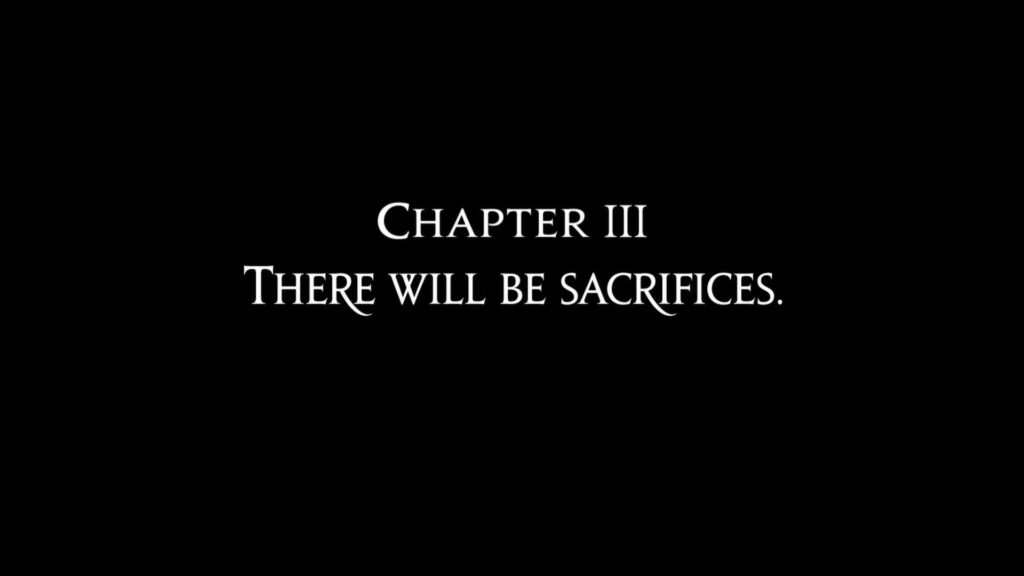
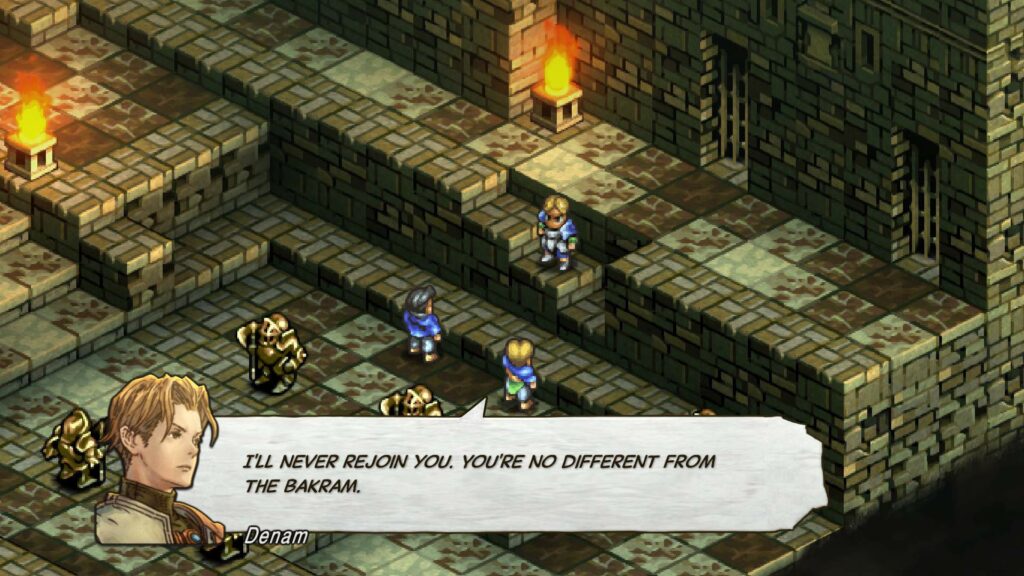
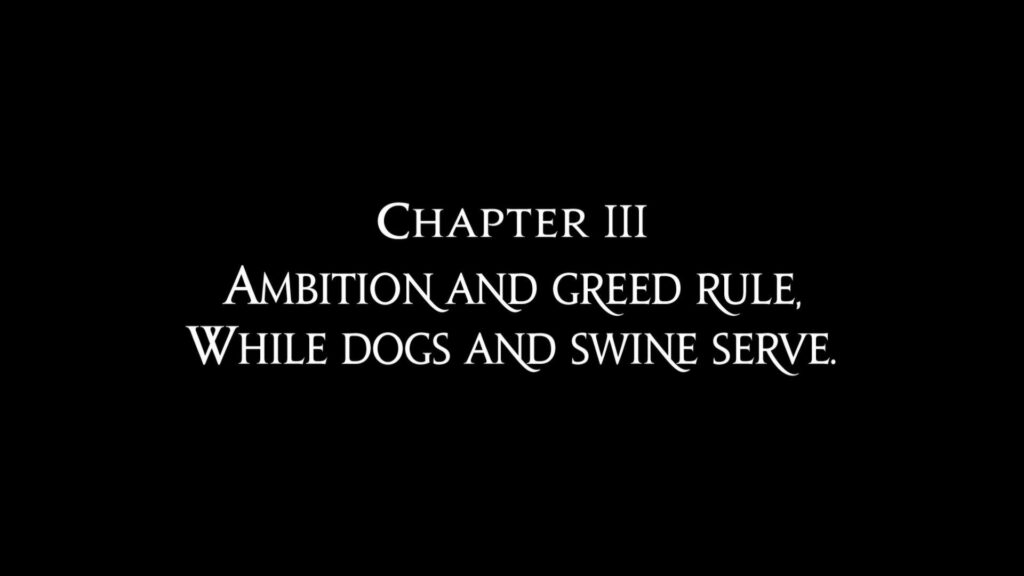
The Battle System
Tactics Ogre: Reborn offers deep, rewarding combat scenarios that require you to think tactically to succeed.
When moving around the world map, you may enter battle by when you reach your destination – or on the path along the way.
Once you enter battle, you move to the party formation screen. Here, you can select units to take part in the battle and determine their formation. You can also check unit information and change equipment.
The number of units that can take part depends on the specific battle.
When a battle begins, the victory condition will be displayed.
Battles in Tactics Ogre: Reborn are not turn-based. They proceed according to the RT (Recovery Time) system. Units take their turn in accordance with factors such as their agility and equipment – regardless of whether they are friend or foe.
When it is a unit’s turn to act, this is called the AT (Attack Turn) state.
When the victory conditions are fulfilled, you will win the battle.
If the victory condition specifies the defeat of a certain unit, then the battle will end when that unit is defeated – even if there are other surviving enemies.
In the results following victory, you will be able to obtain item pouches that you didn’t retrieve in the battle.
You can also check information on the EXP that your troops gained and any units that levelled up.
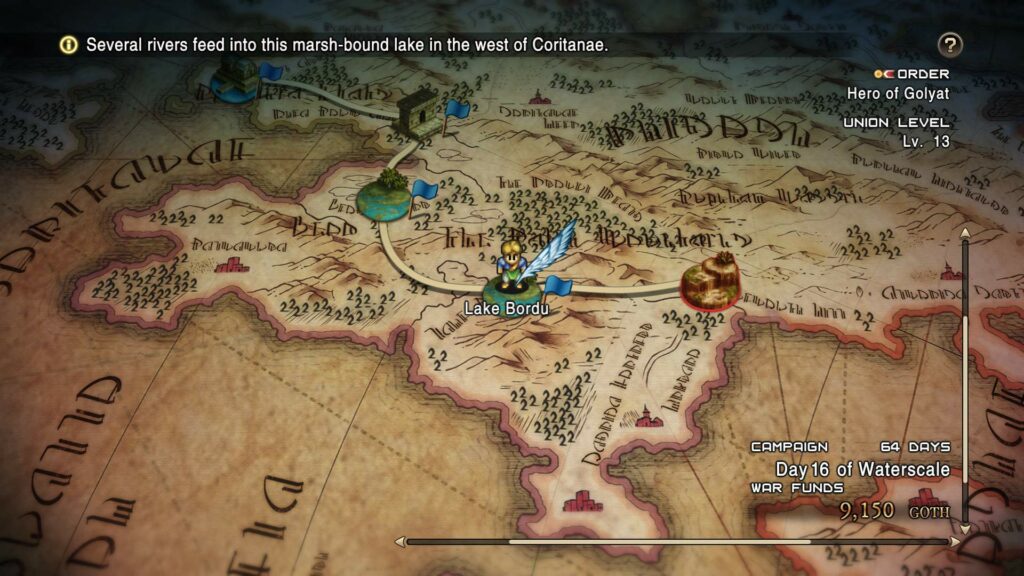
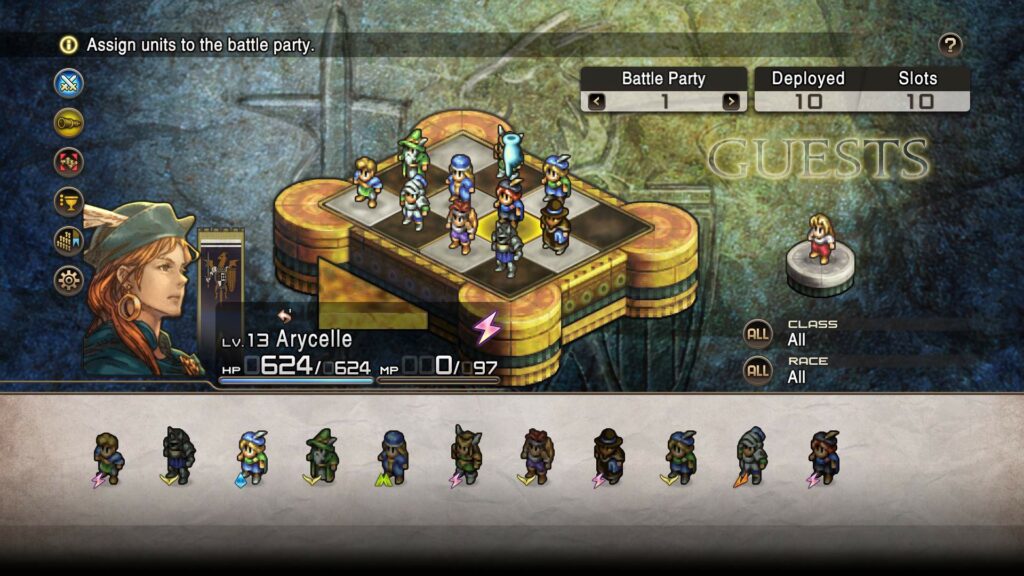
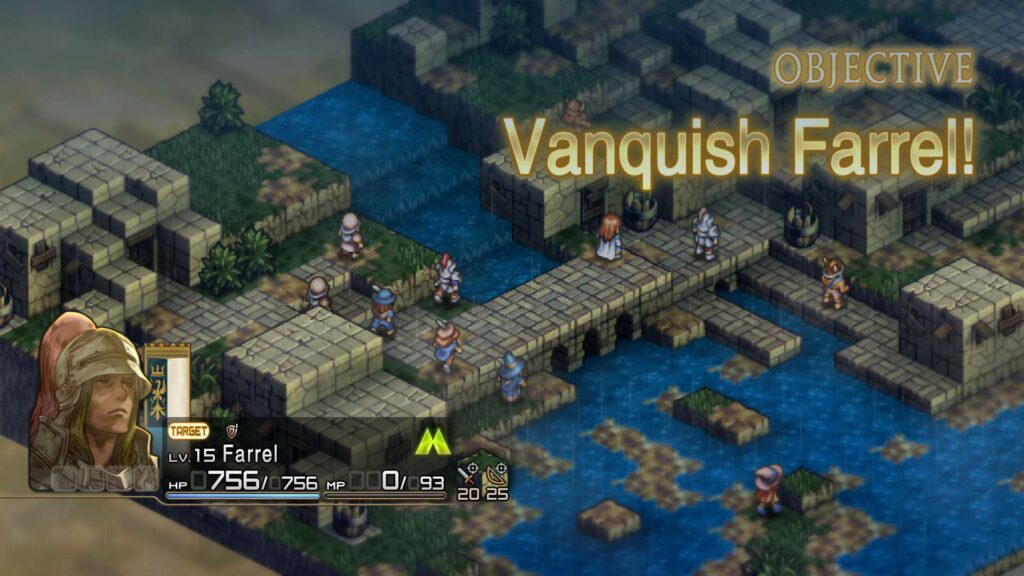
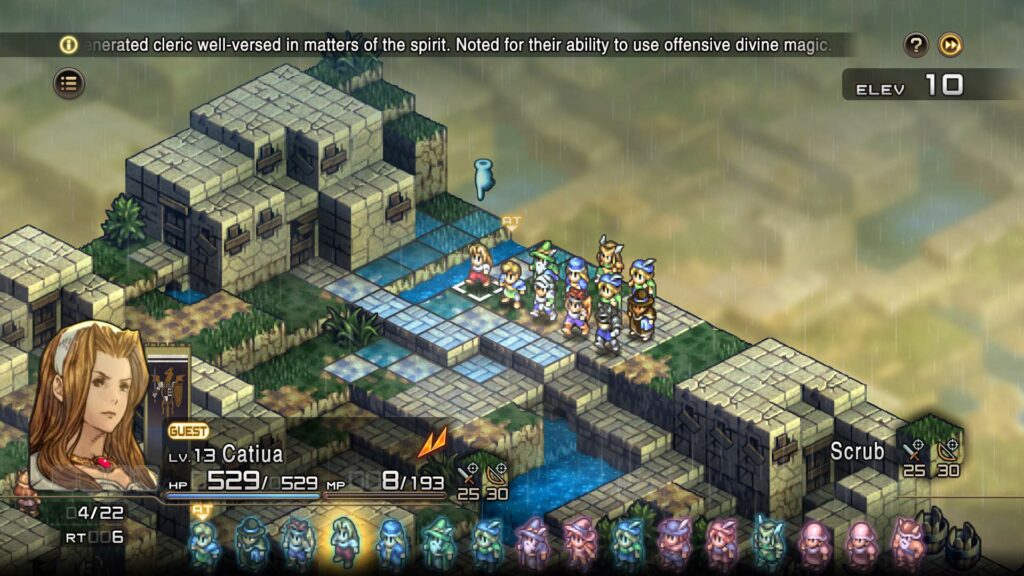
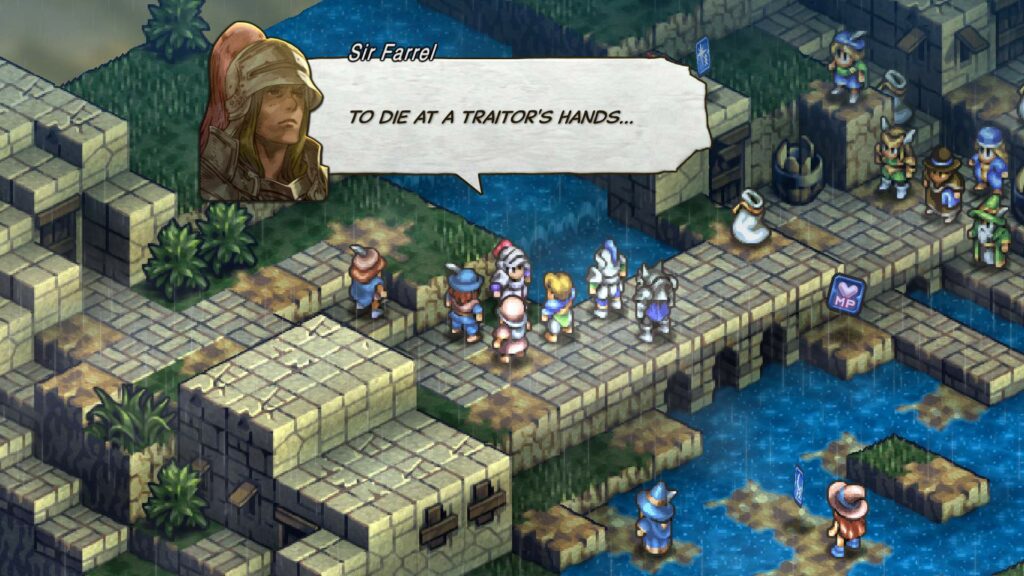
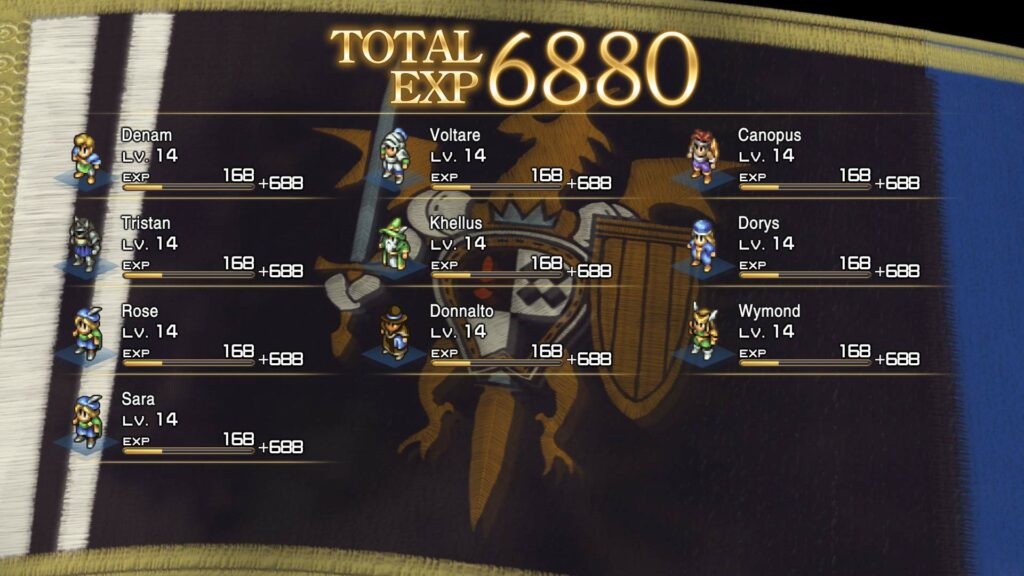
Units & Classes
Denam is more than just a capable warrior – he becomes the leader of his own order of knights!
The individuals who make up this order are known as Units, and they have a wide variety of classes, each with different abilities.
Units grow and become stronger primarily by defeating enemies or being victorious in battle, as well as purchasing equipment from shops, or learning magic.
The stat increases upon levelling up are different for each class. For example, INT (intellect) increases more easily for a Wizard, Berserkers find it easier to build strength, and a Knight develops Vitality more easily.
You can build your own unique order – who will you make an ally, and which classes will you train?
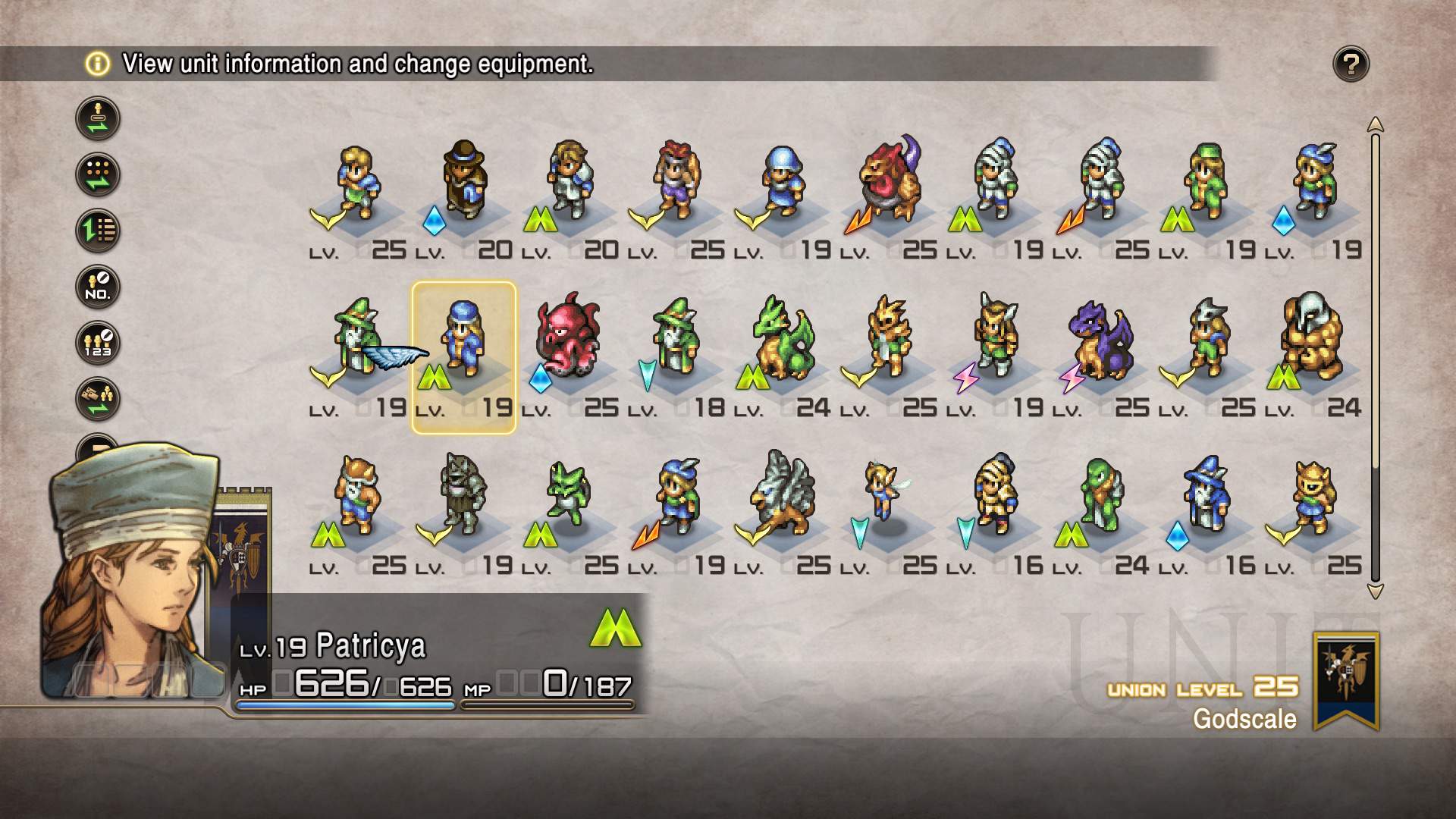
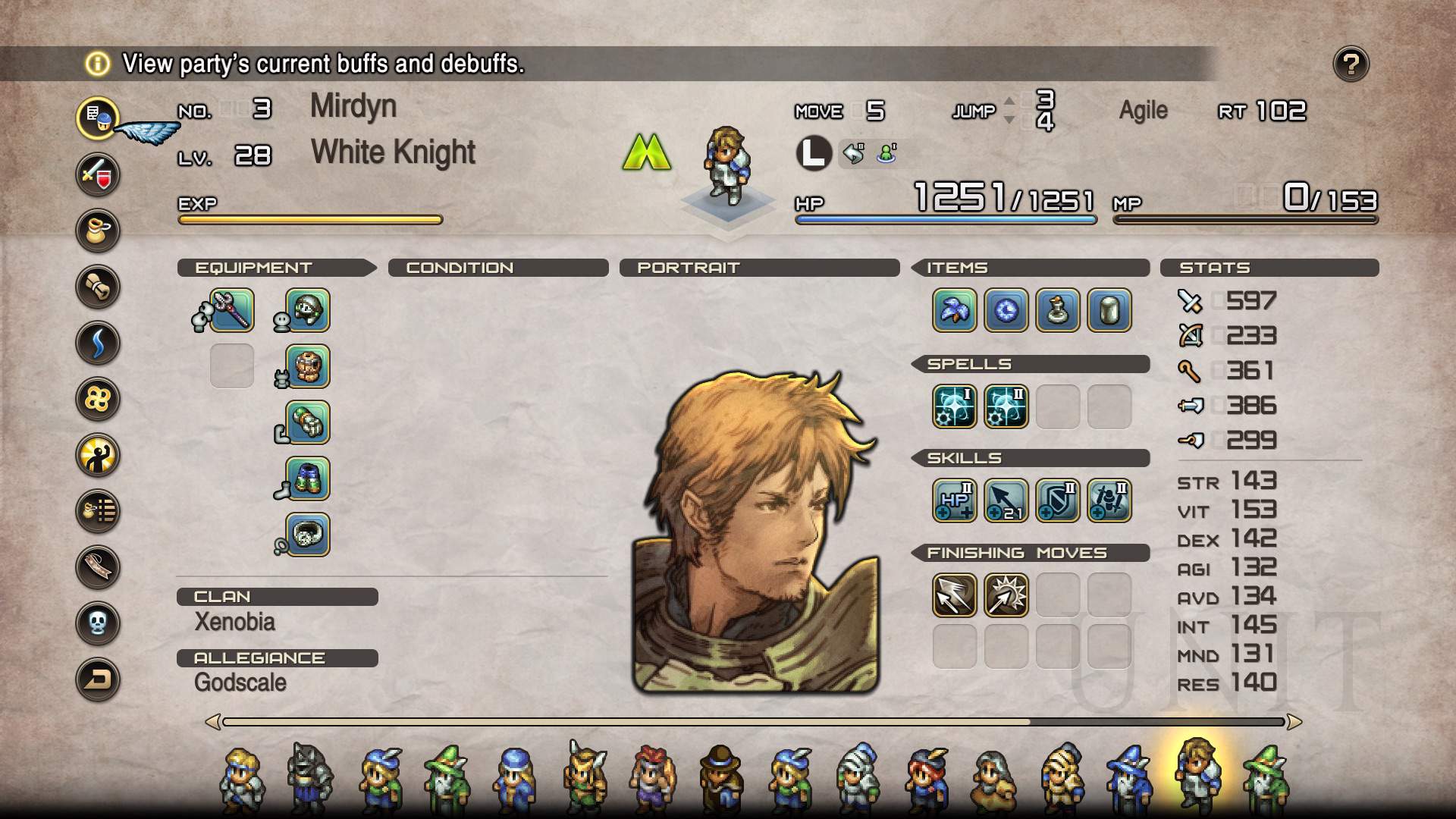
Elements Explained
There are eight elements in Tactics Ogre: Reborn : fire, water, wind, earth, darkness, light, lightning, and ice. The final step in character creation is selecting which associated god in the myth of Xytegenia Denam should seek protection from (more on them in a bit).
Units other than Denam will also have a set element. Matching it with the element of the magic or weapon they use lets them unleash even greater power.
For example, if a fire-element wizard uses fire magic, they will inflict even greater damage!
Elements also have respective elements they’re stronger or weaker against. For example, earth is weak against wind, but strong against lightning.
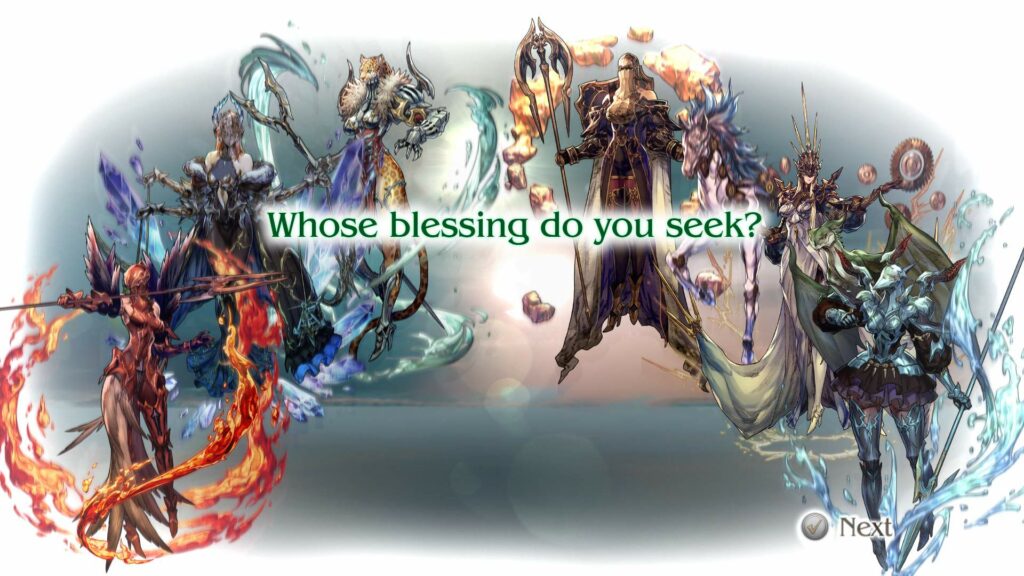
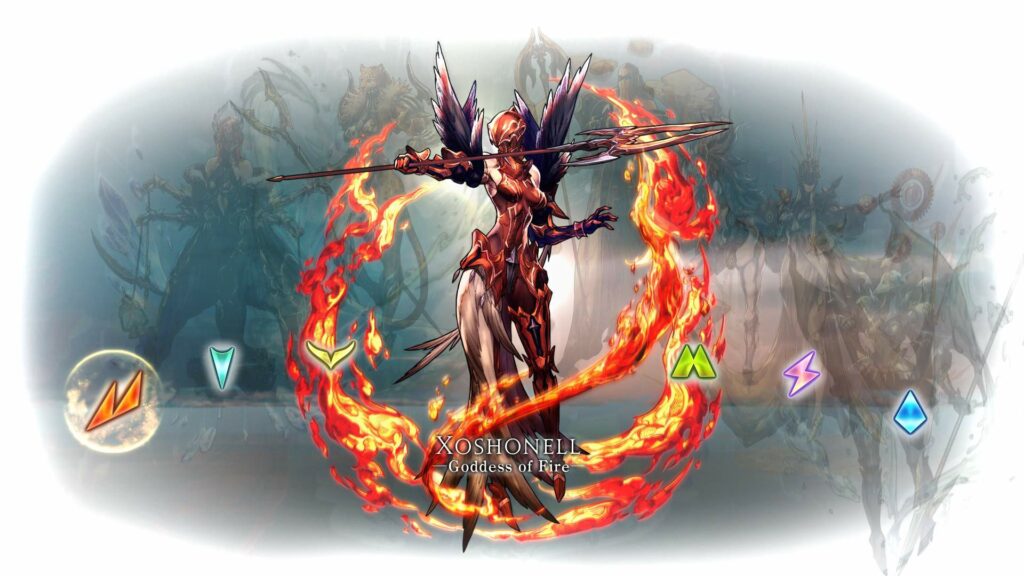
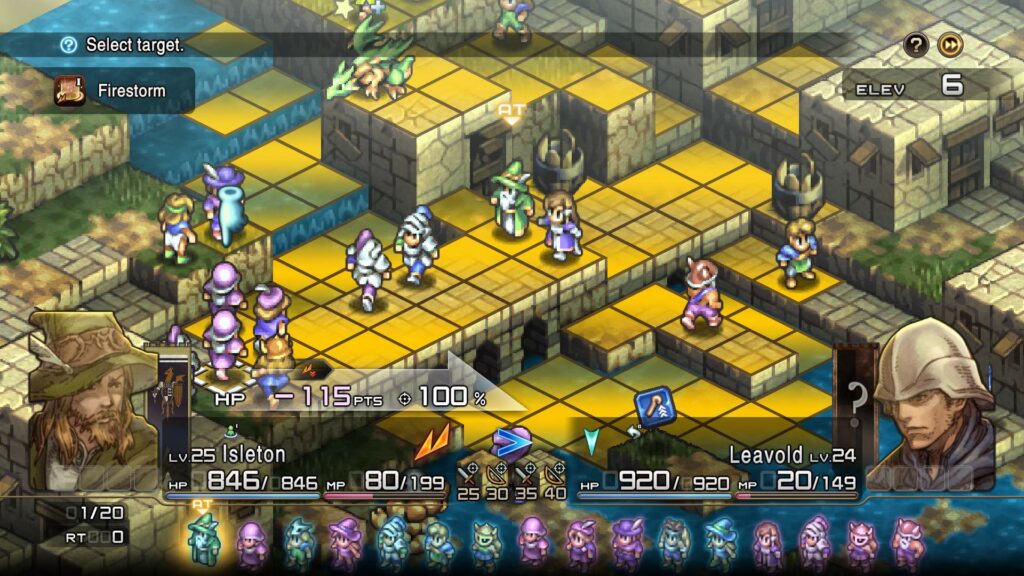
The Gods Who Govern the Elements
Eight gods govern the elements. The illustrations here have been created by Tsubasa Masao, who was in charge of the character design for the PSP version of the game!
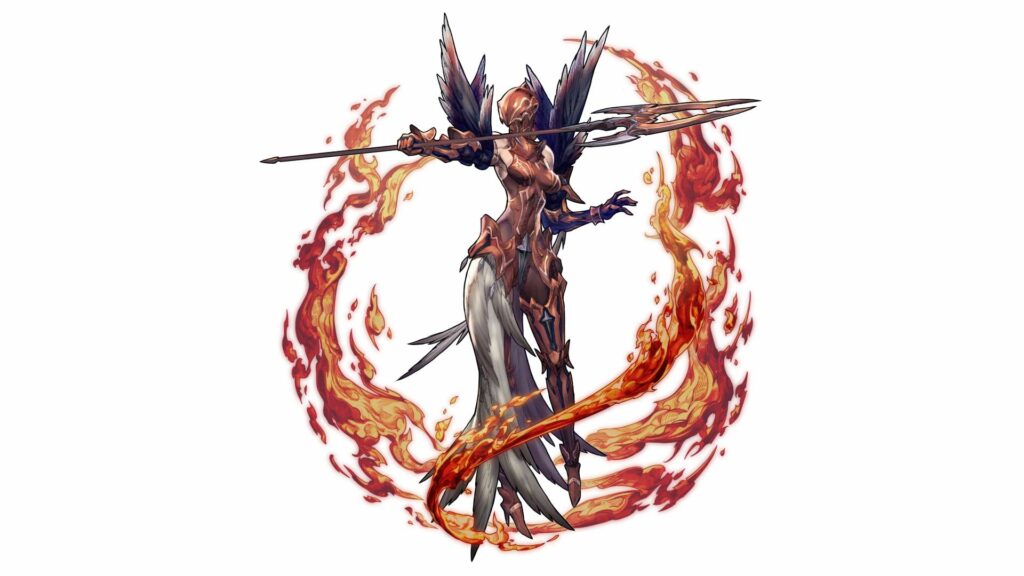
Xoshonell, Goddess of Fire
Xoshonell is the firstborn child of Bora, the Celestial, and Anem, the Terrestrial. Though this makes her the elder sister of Philaha, Vaseqsa, and the others, she has always remained neutral, siding with none of her siblings.
Even in the war against the forces of darkness, later known as the Ogre Battle, she maintained her neutrality, providing no aid to Philaha. Yet Philaha did not begrudge her this, knowing well that of all the gods and goddesses, none wielded greater power than Xoshonell–not even Philaha himself.
Aware of the supreme power at her command, Xoshonell never sought to cast herself with one side or the other. Rather, she is said to provide whatever aid she can to those who seek her help and truly need it. Though hidden beneath helm and plate, the divine beauty of her countenance – and, indeed, her every feature – is without compare.
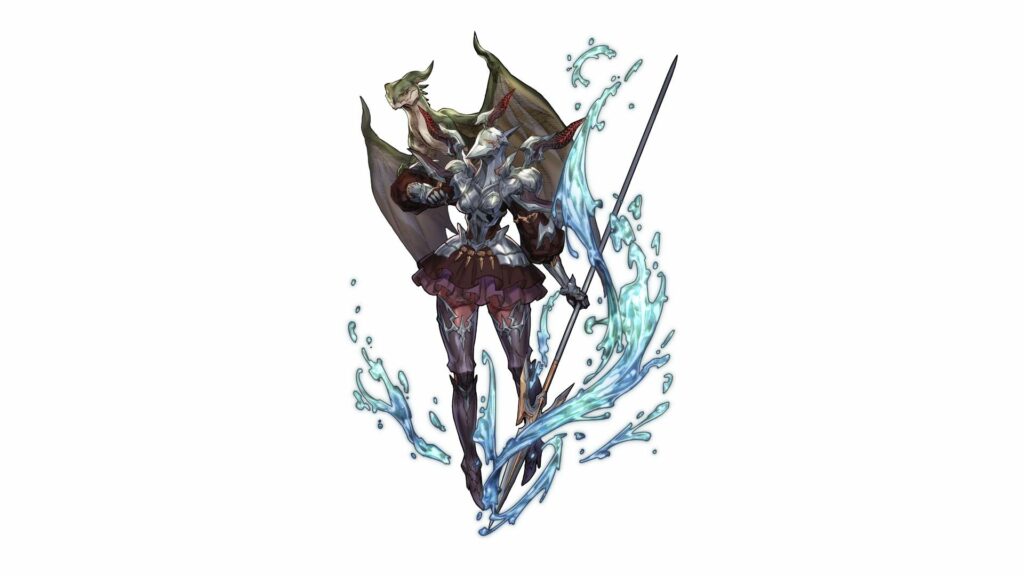
Greuza, Goddess of Water
Greuza is the child of Phora, Goddess of Air, and Vaseqsa, God of the Sea.
Like Ishtar, Greuza was born spear in hand and clad in armor, and she commands a divine host five hundred thousand strong in service of Philaha. A dutiful goddess renowned for her jealous nature, she is said to take the form of a dragon and unleash terrible storms whenever her husband Zamunza, God of the Feast, is unfaithful.
Like Hahnela, she has been worshipped in Valeria since antiquity, and followers of the Vasque religion, who hold Greuza foremost among all the gods, revere her as a symbol of vengeance and power.
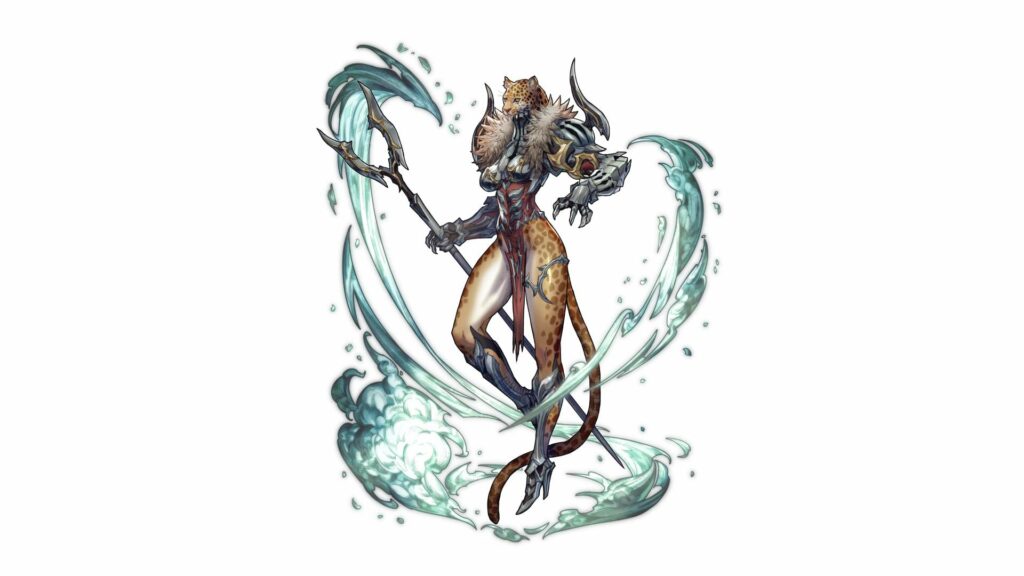
Hahnela, Goddess of Air
Hahnela is the child of Horup, God of Knowledge, and Phelana, Goddess of Justice. The gods of the Four Winds, including Zephyros and Euros, are said to spring from her footsteps.
As would be expected of an island nation, the people of Valeria have always relied on the bounty of the ocean. This alone explains their reverence for the winds Hahnela breathes into life, but as the patron goddess of the sea, she is doubly honored.
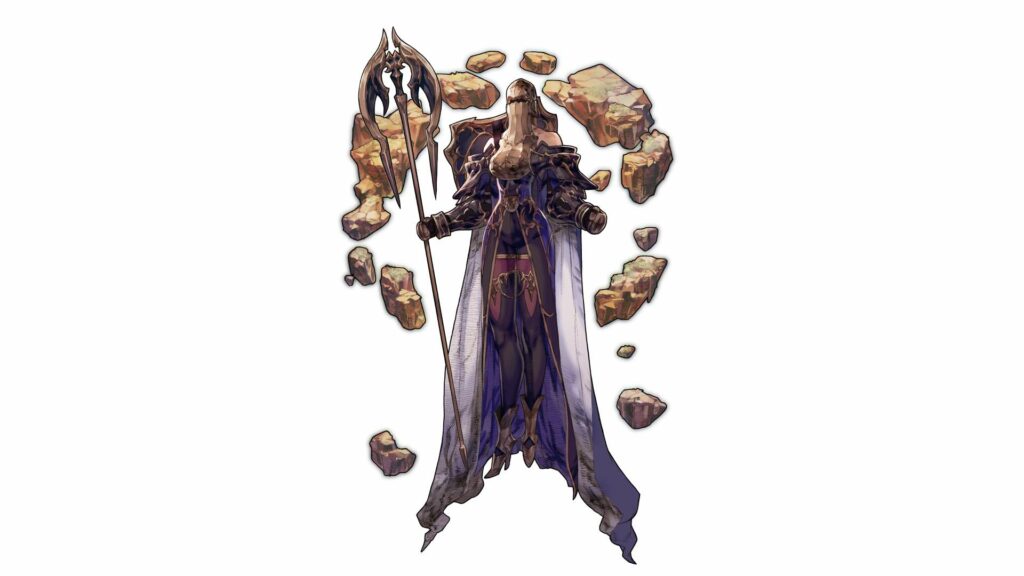
Vaasa, Goddess of Earth
Heaven and earth were cleaved into two by the death of Bora, the Celestial, and Anem, the Terrestrial, giving birth to the world. Vaasa was born from the keening roar as ground and sky were rent apart. She took Anem’s place as steward of the land, and in concert with Philaha, she is said to create life and bring abundance to the earth.
Yet when the lord of the underworld, Demunza, absconded with her daughter Danika, in her grief, Vaasa began to divide this abundance between the world above, and the underworld below. This gave rise to the seasons, and the rhythm of life and death that accompany them.
Vaasa is revered as a goddess of the harvest, yet she is also honored in funerary rites as the one who guides the dead on their journey into the afterlife.
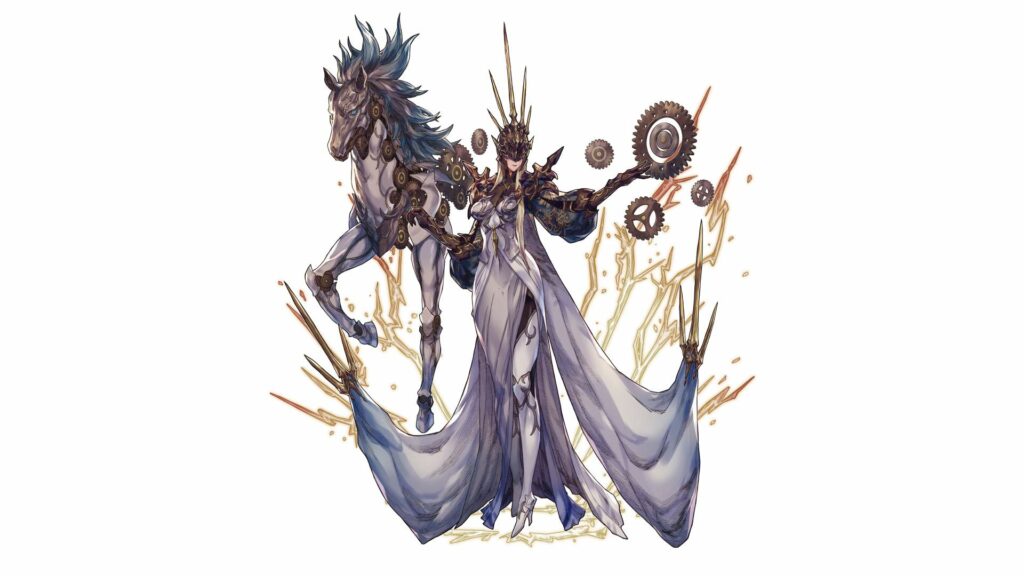
Nestharot, Goddess of Lightning
Nestharot is the child of Aranda, God of Clouds, and Phelana, Goddess of Justice. Also known as the goddess of judgment, Nestharot’s gears are said to symbolize divine order.
Along with Xoshonell, Goddess of Fire, Nestharot remained neutral during the Ogre Battle, and upon the end of that great war, it was her judgment that banished the ogres within the Abyss for tens of millions of years.
In Valeria, the downtrodden have long been Nestharot’s devoted followers, drawn to her impartiality and fairness. Even after the Dynast-King Dorgalua united the isles in the worship of Philaha as the one true god, many still prayed to her in secret.
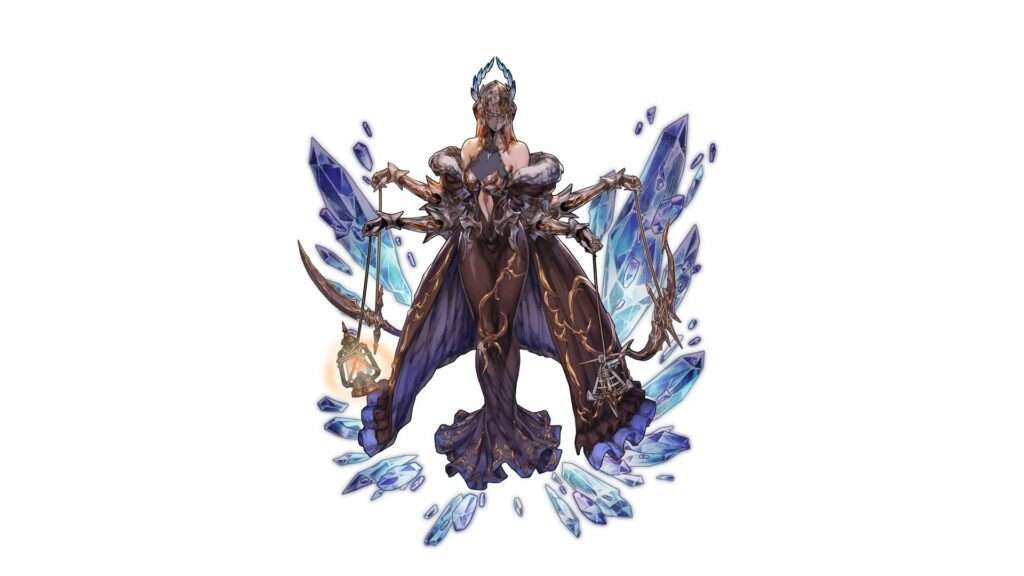
Lyuneram, Goddess of Ice
Lyuneram sprang forth from the tears shed by Morada, God of the Mountains, upon the death of Anem, the Terrestrial. It is said that as Lyuneram was born, Morada’s tears turned to ice, creating vast tundra and glaciers.
Later, when Philaha become lord of the heavens and did battle with his elder brother Demunza, Lyuneram sided with Demunza against him. Not even Philaha and the blazing light of the sun could pierce Lyuneram’s ramparts of bitter ice, and his forces were brought to a standstill. Seizing this opportunity, Demunza descended into the Abyss, where he became king. Lyuneram could only watch as he left, and in the end surrendered herself to Philaha.
Yet in his boundless compassion, Philaha forgave Lyuneram, and gave her a seat among the gods of the heavens.
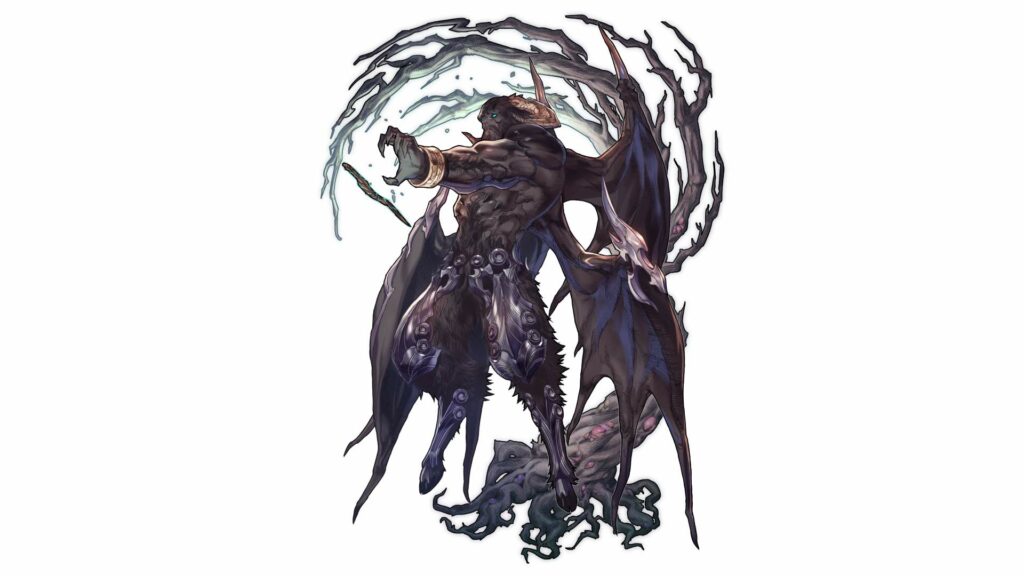
Ashmedai, God of Darkness
Ashmedai marched beneath Demunza’s banner at the head of one hundred eight legions in the Ogre Battle. Though much of Ashmedai’s power was taken from him following his defeat, even in his weakened state, no mortal could hope to challenge him.
Ashmedai is no longer believed to occupy his time plotting great evils, and it is even rumored he aids the mortal realm from time to time. There are many theories as to why this may be, but the common belief is that in the ancient days of Xytegenia, Ashmedai was summoned by the alchemist Gatham, with whom he lost a bet. In payment, Ashmedai was made to assist mortals who sought his help.
None can say for certain whether Ashmedai lends his aid to suit his own whims, or as a result of Gatham’s cunning, but whatever the case, he does not seem to be openly hostile.
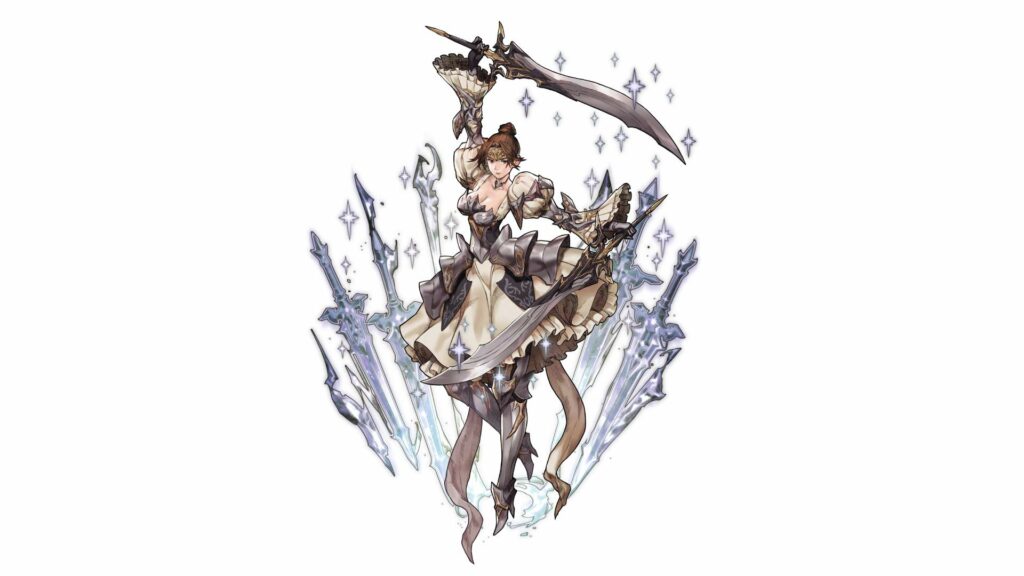
Ishtar, Goddess of Light
When the sun god Philaha and his siblings struck down their father, Bora, ruler of the heavens, Ishtar sprang from the blood that flowed from Bora’s dying body. Ishtar was born wielding a silver sword, and wearing gleaming armor and robes of white. With his dying breath, Bora commanded his newborn daughter to slay Philaha. But Ishtar was wise. Filled with shame at the thought of such a wicked act, she joined Philaha’s ranks instead. Philaha gladly welcomed his younger sister, and gave her a place alongside the other gods.
Ishtar’s white garb symbolizes her purity, while her alabaster blade and armor embody victory. She is revered as the goddess of glory and triumph, giving the cause of those who worship her the certitude of justice.
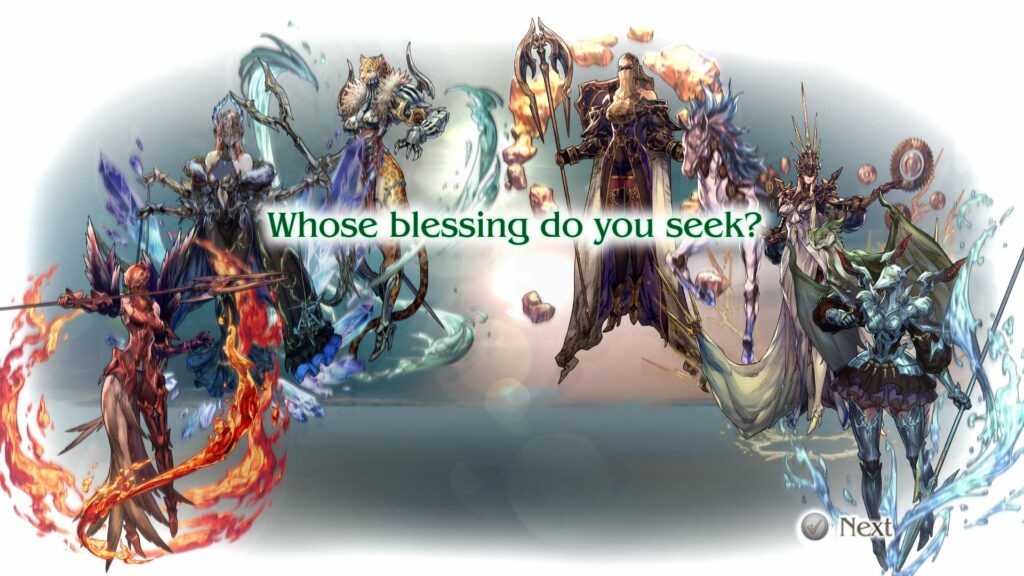
Recent Comments